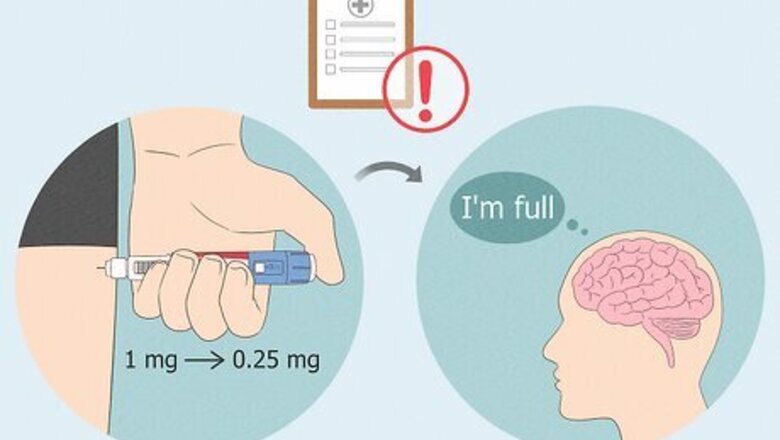
views
Can you microdose Ozempic?
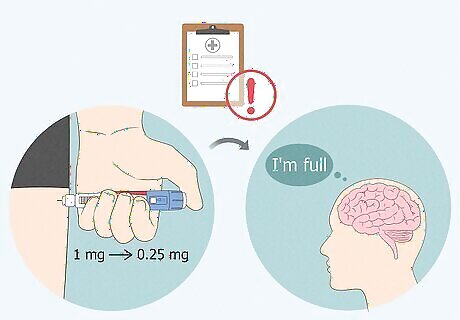
In theory, yes, although it’s not proven to be effective. Ozempic is a brand of semaglutide GLP-1 medication that works by increasing the levels of a hormone (glucagon-like peptide-1, or GLP-1). This hormone tells your brain that you’re full, which helps to slow digestion, increase weight loss, and curb appetite. The logic behind microdosing Ozempic makes sense—any amount of GLP-1 should help achieve this effect to one degree or another—but it hasn’t been studied in any clinical settings, which means we can’t know if microdosing is effective or not. Anecdotes from people who have tried microdosing Ozempic seem to indicate that they’ve successfully lost weight. Again, this hasn’t been studied or proven, though. What is microdosing? Microdosing refers to taking a smaller than prescribed dose of a medication. So, instead of taking 1 mg of a medication a week, you might microdose it by taking 0.5 mg for two weeks, or 0.25 mg for four weeks.
Benefits of Microdosing Ozempic
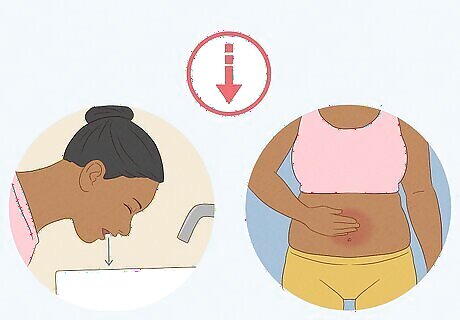
Microdosing may reduce unpleasant side effects. While side effects are typically pretty mild, some users of Ozempic report nastier side effects at higher dosages. To reduce these feelings, they’ve found that microdosing Ozempic has been an easy way to reduce the side effects without losing the benefits of the medication. Common side effects include: Nausea Diarrhea Vomiting Stomach pain Constipation Low blood sugar
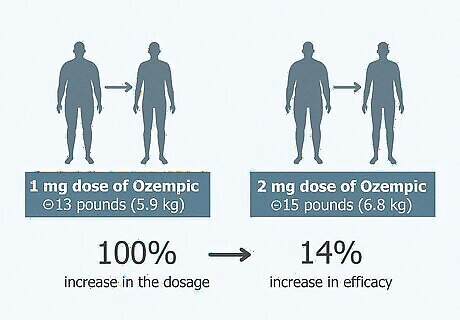
You may get the same effects as you get at a higher dose. It has been proven that the 2 mg dose of Ozempic is much more efficient than 1 mg of Ozempic for people with diabetes. However, if you’re taking the drug for weight loss, you don’t seem to get that much of an increased effect by taking 2 mg instead of 1 mg. For those users, microdosing may make a lot of sense. In one study, Ozempic users lost 15 pounds (6.8 kg) on the 2 mg dose, and 13 pounds (5.9 kg) on the 1 mg dose. That’s a 100% increase in the dosage for a 14% increase in efficacy.
Risks of Microdosing Ozempic

Microdosing hasn’t been studied or proven to work. It’s true that the logic behind microdosing makes a lot of sense, but that doesn’t mean there isn’t some unknown impact we’re unaware of—we just simply don’t know how microdosing impacts the body. Until more studies have been conducted and released, we can’t confidently say microdosing is safe.
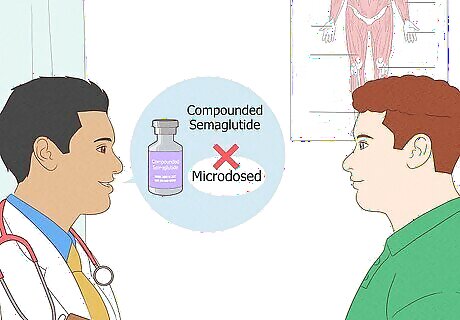
Compounded semaglutide drugs should not be microdosed. Compounded semaglutide drugs refer to GLP-1 meds that are combined (or “compounded”) with other medications. If you’ve been prescribed a compounded version of Ozempic, do not microdose it. There are other medications in the solution that may not be safe or effective to take in smaller doses. Talk to your doctor about switching to a pure version of Ozempic for microdosing if you’re really committed to taking a smaller dosage.
Why do people want to microdose Ozempic?
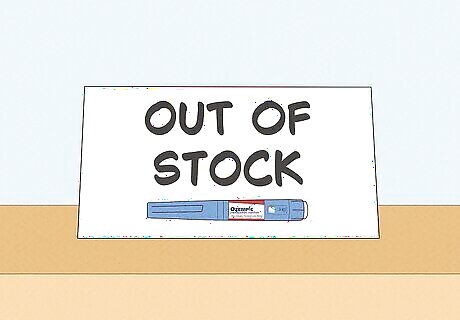
Ozempic can be difficult to get because there's a shortage. GLP-1 medications have proven to be very effective at what they do, and since there’s a huge demand for diabetes treatment and weight loss in the US, these drugs are highly sought after. As a result, there has been a huge shortage of these medications, and it’s uniquely difficult to get your hands on. Microdosing minimizes the odds you run out and can’t get a refill. If you are worried about running out of Ozempic, ask your doctor and insurance company about alternative GLP-1 medications that are slightly less difficult to find, like Zepbound, Rybelsus, Wegovy, or Mounjaro.
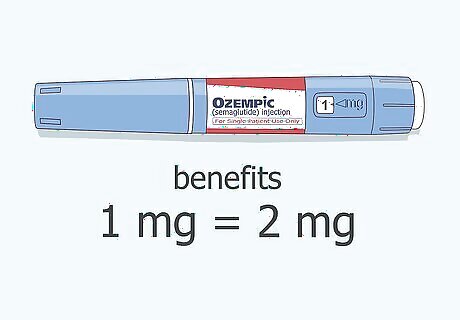
Smaller doses of Ozempic may produce similar benefits. Anecdotally, some people have found that using smaller doses is just as effective as using the prescribed dose. It does seem to be true that there’s a “cliff” where increasing the dose of Ozempic doesn’t provide additional benefits, so it’s likely that some users have just noticed they don’t need as much of the drug to get it to work correctly.

It’s possible that microdosing Ozempic minimizes side effects. Most people experience extremely mild side effects from Ozempic (it’s part of why the drug is so popular), but for an unfortunate few, the nausea and stomach pain can be frustrating. It’s possible that taking smaller doses of Ozempic may offer a more balanced experience with nearly all of the drug’s benefits.
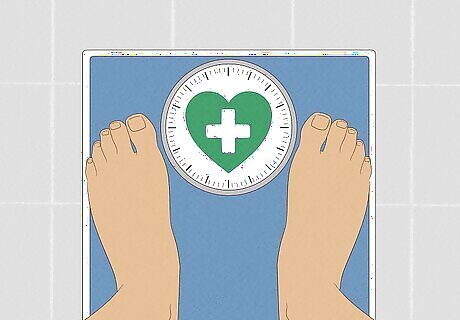
Microdosing Ozempic may help you maintain weight after weight loss. Most people who take a relatively higher dose of Ozempic find themselves losing weight without even trying. However, at a certain point a lot of people reach their target weight and they don’t want to keep shedding the pounds. Microdosing Ozempic should theoretically help with this goal. Do you gain the weight back if you stop taking Ozempic? If you stop taking the drug, you go back to eating poorly, or you stop working out, the odds are very high that you’ll gain the weight back. You must maintain the same diet and active lifestyle you had when you were on Ozempic to maintain the benefits.

The cost of Ozempic is abnormally high for a medication. Insurance companies have fought tooth and nail to avoid covering these drugs because they’re uniquely expensive, which means many people end up paying $500-1,500 per refill, which can seriously add up over time (especially since most people need to take the medication for an extended period of time). Some people have resorted to microdosing to avoid the heavy financial burden.
Talking to Your Doctor

See your doctor first before microdosing Ozempic. Talk to your doctor, explain what your motivations are, and why you’re interested in microdosing. They’ll be able to advise you on how to do this safely if it is, indeed, something safe for you to do given your health. They may even be able to prescribe you something else that helps you achieve your goals without messing with your Ozempic dosage. Your doctor won’t be upset or threaten to take your dosage prescription down a notch. They’re on your team and there’s absolutely no harm in just talking to them. It is generally considered safe for people to take Ozempic if they have an autoimmune disorder; just make sure your doctor knows if you’re microdosing it. A lot of women are taking Ozempic to help with the weight gain associated with menopause, but talk to your doctor first before microdosing it.
Wegovy Microdosing

Microdosing Wegovy follows the same logic as Ozempic. There isn’t technically a huge difference between Ozempic, Wegovy, and all the other semaglutide GLP-1 medications, so the risks, benefits, and considerations apply. The only difference would be the math on how you split the dosage up, since Ozempic and Wegovy aren’t interchangeable dosage-wise. Wegovy and Ozempic are actually made by the same company. The only difference between the two is that one is designed for weight loss and the other is FDA-approved for treating diabetes.
Final Thoughts
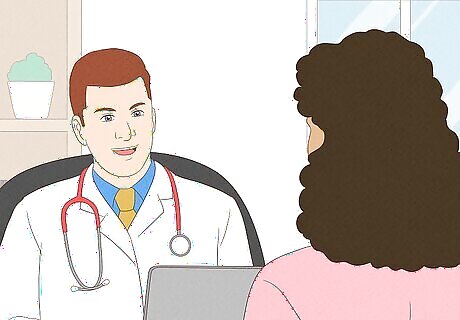
Microdosing Ozempic makes sense on paper, but talk to your doctor. There are a lot of good indicators that seem to suggest microdosing Ozempic is a safe and reasonable way to consume the medication, but you still have to talk to your doctor first—especially if you were prescribed the drug for diabetes. It’s also important to recognize that microdosing may have unintended risks, since it hasn’t been fully studied or FDA approved as a safe way to go.




















Comments
0 comment